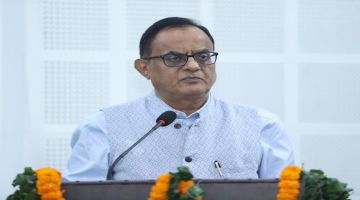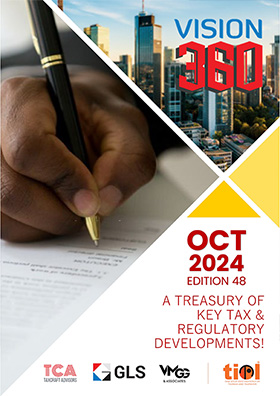I-T - Whether when law makes no distinction between tangible and intangible assets, Intellectual Property Rights can be equated with plant & machinery, eligible for depreciation u/s 32 - YES: SC
By TIOL News Service
NEW DELHI, OCT 15, 2015: THE issue before the Bench is - Whether when the law makes no distinction between tangible and intangible assets, Intellectual Property Rights can be equated with plant & machinery, eligible for depreciation u/s 32 r.w Sec 43(3). YES is the answer.
The Facts of the case
In 1939 late Sri S. Raghuram Prabhu started the business of manufacturing beedis. He was later joined in the business by Sri Madhav Shenoy as a partner and thus M/s. Mangalore Ganesh Beedi Works ('MGBW') came into existence with effect from 28th February, 1940. The partnership firm was reconstituted from time to time and its last reconstitution and partnership deed contained Clause 16 relating to the manner in which the affairs of the partnership firm were to be wound up after its dissolution. Due to differences between the partners of MGBW, the firm was dissolved on or about 6th December, 1987 when two partners of the firm applied for its winding up by filing Company Petition No. 1 of 1988 in the High Court. While entertaining the Company Petition the High Court appointed an Official Liquidator and eventually, after hearing all the concerned parties, a winding up order was passed on 14th June, 1991.
In its order, the High Court held that the firm was dissolved with effect from 6th December, 1987 and directed the sale of its assets as a going concern to the highest bidder amongst the partners. Pursuant to the order passed by the High Court an auction was conducted in which three of the erstwhile partners forming an association of persons ('AOP-3') emerged as the highest bidders and their bid of Rs.92 crores for the assets of MGBW was accepted by the Official Liquidator on or about 17th November, 1994. With effect from 18th November, 1994 the business of the firm passed on into the hands of AOP-3 but the tangible assets were actually handed over by the Official Liquidator to AOP-3 on or about 7th January, 1995.
MGBW ( the 'Assessee') filed its return for the period 18th November, 1994 to 31st March, 1995 and subsequently filed a revised return. Broadly, the Assessee claimed a deduction of Rs. 12,24,700/- as a revenue expenditure permissible under Section 37 of the Income-Tax Act, 1961 towards legal expenses incurred. The Assessee also claimed depreciation under Section 35A and 35AB of the Act towards acquisition of Intellectual Property Rights such as rights over the trademark, copyright and technical know-how. In the alternative, the Assessee claimed depreciation on capitalizing the value of the Intellectual Property Rights by treating them as plant.
The Assessing Officer passed an order rejecting the claim of the Assessee. On appeal, the CIT(A) partly allowed and held that the Assessee was entitled to a deduction towards legal expenses. However, the claim of the Assessee regarding deduction or depreciation on the Intellectual Property Rights was rejected. On appeal, the Tribunal allowed the appeal of the assessee and rejected that of the Revenue. Aggrieved by the HC order, the assessee moved the Apex Court.
Held that,
++ we are not at all impressed with the submission of the counsel for the Revenue. There is a clear finding of fact by the Tribunal that the legal expenses incurred by the Assessee were for protecting its business and that the expenses were incurred after 18th November, 1994. There is no reason to reverse this finding of fact particularly since nothing has been shown to us to conclude that the finding of fact was perverse in any manner whatsoever. That apart, if the finding of fact arrived at by the Tribunal were to be set aside, a specific question regarding a perverse finding of fact ought to have been framed by the High Court. The Revenue did not seek the framing of any such question.
++ accordingly, we hold that the High Court was not justified in upsetting a finding of fact arrived at by the Tribunal, particularly in the absence of a substantial question of law being framed in this regard. Therefore, we set aside the conclusion arrived at by the High Court on this question and restore the view of the Tribunal and answer the question in favour of the Assessee and against the Revenue;
++ the second question to be answered is whether the Assessee is entitled to any benefit under Section 32 of the Act read with Section 43(3) thereof for the expenditure incurred on the acquisition of trademarks, copyrights and know-how. The definition of 'plant' in Section 43(3) of the Act is inclusive;
++ the question is, would intellectual property such as trademarks, copyrights and know-how come within the definition of 'plant' in the 'sense which people conversant with the subject-matter with which the statute is dealing, would attribute to it'? In our opinion, this must be answered in the affirmative for the reason that there can be no doubt that for the purposes of a large business, control over intellectual property rights such as brand name, trademark etc. are absolutely necessary. Moreover, the acquisition of such rights and know-how is acquisition of a capital nature, more particularly in the case of the Assessee. Therefore, it cannot be doubted that so far as the Assessee is concerned, the trademarks, copyrights and know-how acquired by it would come within the definition of 'plant' being commercially necessary and essential as understood by those dealing with direct taxes;
++ Section 32 of the Act as it stood at the relevant time did not make any distinction between tangible and intangible assets for the purposes of depreciation. The distinction came in by way of an amendment after the assessment year that we are concerned with. That being the position, the Assessee is entitled to the benefit of depreciation on plant (that is on trademarks, copyrights and know-how) in terms of Section 32 of the Act as it was at the relevant time. We are, therefore, in agreement with the view taken by the Tribunal in this regard that the Assessee would be entitled to the benefit of Section 32 of the Act read with Section 43(3) thereof;
++ in this context, it may also be mentioned that by denying that the trademarks were auctioned to the highest bidder, the Revenue is actually seeking to re-write clause 16 of the agreement between the erstwhile partners of MGBW. This clause specifically states that the going concern and all the trademarks used in the course of the said business by the said firm and under which the business of the partnership is carried on shall vest in and belong to the highest bidder. Under the circumstances, it is difficult to appreciate how it could be concluded by the Revenue that the trademarks were not auctioned off and only the goodwill in the erstwhile firm was auctioned off. In D. S. Bist & Sons v. CIT it was held that the Act does not clothe the taxing authorities with any power or jurisdiction to re-write the terms of the agreement arrived at between the parties with each other at arm's length and with no allegation of any collusion between them. 'The commercial expediency of the contract is to be adjudged by the contracting parties as to its terms.'
++ the issue, looked at from any angle, would lead to the conclusion that Question No. 3 is required to be answered in the negative, in favour of the Assessee and against the Revenue. We do so accordingly. Question No. 2 is left open for consideration in an appropriate case.
(See 2015-TIOL-241-SC-IT)















